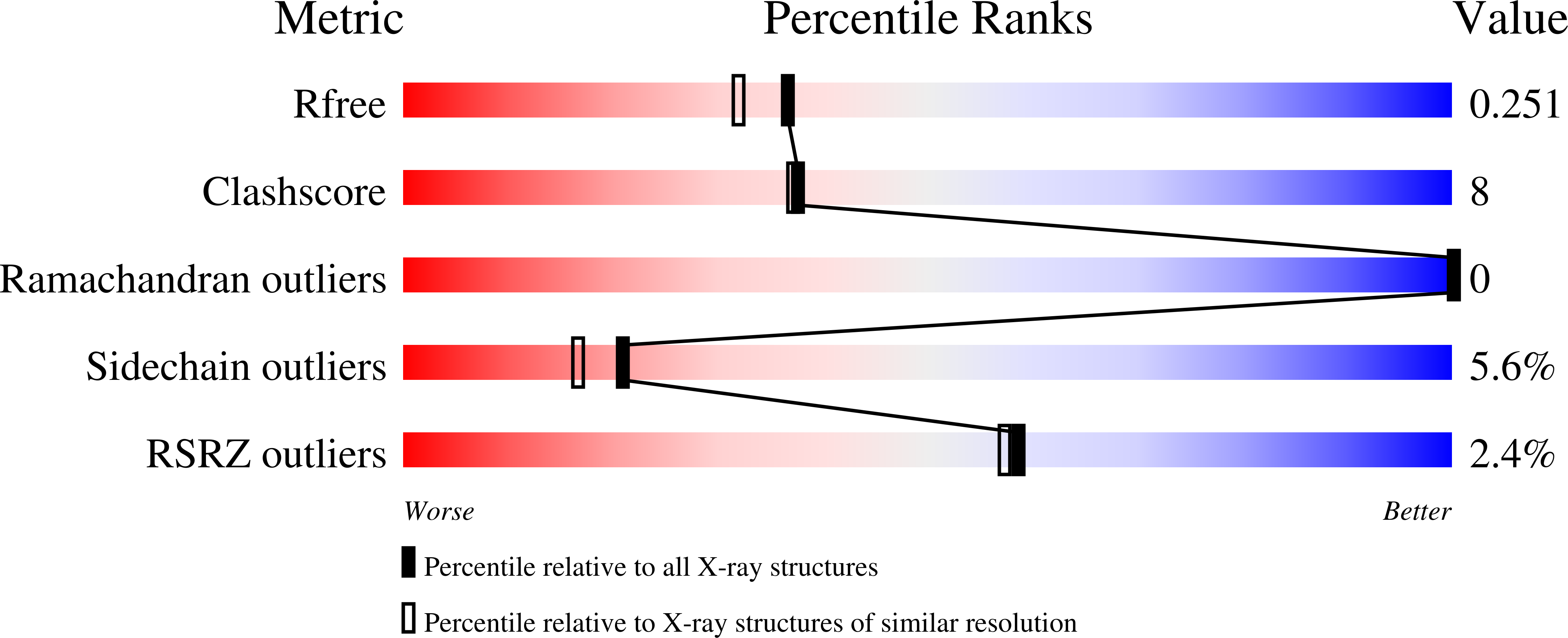Endostatin Derived from Collagens Xv and Xviii Differ in Structural and Binding Properties, Tissue Distribution and Anti-Angiogenic Activity
Sasaki, T., Larsson, H., Tisi, D., Claesson-Welsh, L., Hohenester, E., Timpl, R.(2000) J Mol Biol 301: 1179
- PubMed: 10966814
- DOI: https://doi.org/10.1006/jmbi.2000.3996
- Primary Citation of Related Structures:
1DY2 - PubMed Abstract:
Endostatin is a fragment of the C-terminal domain NC1 of collagen XVIII that inhibits angiogenesis and tumor growth. We report the characterization of a collagen XV endostatin analogue and its parent NC1 domain, obtained by recombinant expression in mammalian cells. Both NC1 domains contain a trimerization domain, a hinge region that is more sensitive to proteolysis in collagen XVIII and the endostatin domain. Unlike endostatin-XVIII, endostatin-XV does not bind zinc or heparin, which is explained by the crystal structure of endostatin-XV. The collagen XV and XVIII fragments inhibited chorioallantoic membrane angiogenesis induced by basic fibroblast growth factor (FGF-2) or vascular endothelial growth factor (VEGF), but there are striking differences depending on which cytokine is used and whether free endostatins or NC1 domains are applied. The collagen XV and XVIII fragments showed a similar binding repertoire for extracellular matrix proteins. Differences were found in the immunohistological localization in vessel walls and basement membrane zones. Together, these data indentify endostatin-XV as an angiogenesis inhibitor, which differs from endostatin-XVIII in several important functional details.
Organizational Affiliation:
Max-Planck-Institut für Biochemie, Martinsried, D-82152, Germany.















